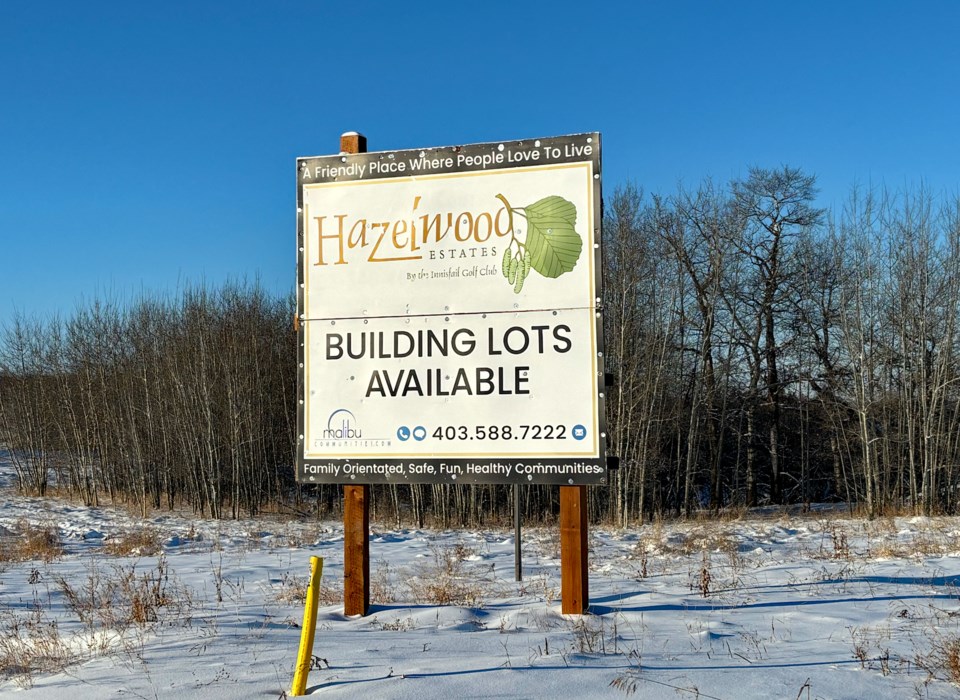INNISFAIL – After a year of study and research the Town of Innisfail is finally moving forward with an action plan to address the municipality’s “dire’ housing problem.
At council’s regular meeting on Jan. 8, Meghan Jenkins, community services director for the Town of Innisfail, presented the 2024 Housing Action Plan (HAP), an initiative created to guide new housing strategies for the next two years.
Most importantly, HAP is designed to be a road map to influence the development of new housing units in the community.
The new action plan was unanimously approved by town council at its regular meeting on Jan. 8.
“I would say it's (housing) a dire need, and it's a dire need from an affordability perspective on how many young families are not coming here because there's not enough flexibility in the housing inventory we have,” said Mayor Jean Barclay.
“How many longtime residents of Innisfail are we potentially losing to Red Deer or other places because there's not enough housing choices for them to change to when needed, or maybe other levels of care?
“So, I think it's dire. I mean, if you don't have population growth in your community that has a large impact.”
Jenkins said the plan is based on recommendations from of the 2023 Housing Needs Assessment (HNA), a report that was presented to town council last Aug. 14 and adopted last October.
The HNA was created to form the basis of future housing initiatives and the now approved HAP.
Jenkins noted the HNA identified a “large unmet” housing demand, including: 27 or more single/semi detached units; 31 or more dwelling units consisting of apartments or row housing; and 29 or more subsidized community dwelling units.
To keep pace with the projected demand, added Jenkins in her report, an additional 81 dwelling units are required by 2031.
On a potentially more positive note, there is cautious optimism that shovels could soon be in the ground for the first phase of the planned massive development on the northeast side of Dodd’s Lake following the Municipal Planning Commission’s approval last October of 101 residential high density (R4) lots.
“The frustrating part is that this is exactly one of the types of housing we need, townhomes that are more affordable,” said Barclay of the planned first phase of new housing at Dodd’s Lake, which so far has no announced start date.
“That's not really in the town's control. It's up to them to decide to move forward. Things we can control are building some houses ourselves.”
And the town is doing just that.
Last fall during budget deliberations council approved $1.5 million in the 2024 municipal budget to build three to four homes in the Napoleon Estates subdivision.
The homes will then be listed with a local realtor once they are either completed or near completion.
Council was told on Jan. 15 the request for proposals for the construction of the new homes closed on Jan. 10. The final builder selection will be presented for council approval on Jan. 22.
With the approved HAP the town has created a blueprint for action over the next two years with short, mid, and long-term strategies to stimulate housing construction for all income levels.
The two-page HAP outlines a list of actions and targets for market and non-market strategies, along with how and when they will be implemented over the next two years, as well as progress indicators.
Jenkins said in her report to council that HAP’s actions target the creation of market rate and non-market housing both through direct action - enforcement, housing construction and land acquisition - as well as indirect action through policy and partnerships.
The actions for market and non-market include:
• demolition, rehabilitation, or redevelopment of vacant and derelict properties;
• land use bylaw review, including regulation of pre-fabricated and manufactured units;
• continued dialogue with larger land developers;
• Municipal Development Plan update review;
• guiding small developers through redevelopment process for existing infill sites;
• construction in Napoleon Meadows;
• mixed use/downtown redevelopment support;
• land banking of strategic parcels for future sale or development;
• complete detailed design and engineering for town-initiated Napoleon SW development of 10-acre residential area;
• Downtown Area Redevelopment plan renewal;
• education and awareness of cooperative model for housing creation;
• collaborate with Red Deer Housing;
• authority to ensure existing units are utilized and what additional demand exists;
• collaborate with Parkland Foundation;
• explore secured market/non-market rental policy;
• explore partnership opportunities with private housing developers (ie. Habitat for Humanity); and
• create connections with private seniors’ housing providers.
“We'll see how things progress throughout the year,” said Barclay of the plan, noting there are other factors to consider. “There are mortgage rates (and) the housing market, how tight it is.
“There’s lots of factors. There are things that are out of our control. But I'm always optimistic because we have a great team working on this.”



